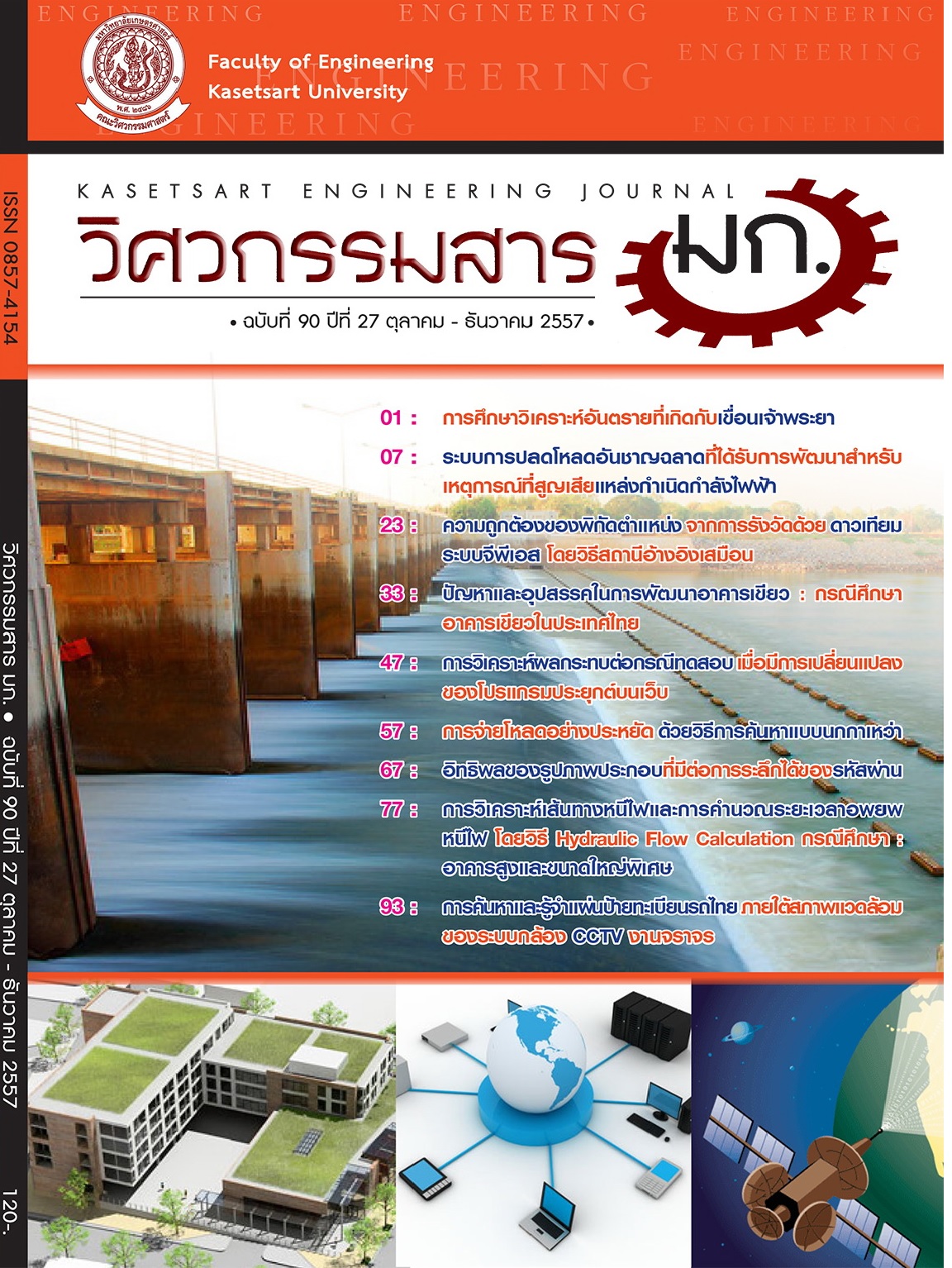การศึกษาวิเคราะห์อันตรายที่เกิดกับเขื่อนเจ้าพระยา
Abstract
ในปี พ.ศ. 2523 (หลังการก่อสร้างแล้วเสร็จ 25 ปี) ได้มีการศึกษาว่าสามารถ Operate เขื่อนเจ้าพระยาที่ระดับน้ำต่างกันเกิน 9.00 ม. (เกณฑ์การออกแบบ) ได้หรือไม่ ปรากฏว่าได้ และได้มีการศึกษาถึงการระบาย น้ำลงท้ายน้ำว่าสามารถ Operate ให้ Hydraulic jump เกิดใน Stilling basin ได้ หลังจากนั้นมีการขุดลอก แม่น้ำเจ้าพระยาท้ายเขื่อนโดยก่อนการขุดลอกไม่ได้ตรวจสอบว่า เมื่อขุดลอกแล้วยังสามารถ Operate ให้ Hydraulic jump เกิดใน Stilling basin ได้ อนึ่งในปีงบประมาณ 2554 ได้มีการขุดลอกอีกโดยตั้งสมมุติฐาน ว่าขุดลอกเฉพาะตะกอนที่ตกทับถม จากการวิเคราะห์พบว่า ตะกอนที่ตกทับถมส่วนใหญ่เกิดจากการกัดเซาะ แม่น้ำท้ายเขื่อน จึงเสนอแนะว่าควรทำการขุดลอกแม่น้ำเจ้าพระยาโดยเว้นระยะห่างตามลำน้ำท้ายเขื่อนไม่น้อยกว่า 70 กม. พร้อมทั้งตรวจสอบว่าเขื่อนยังสามารถ Operate ให้ Hydraulic jump เกิดใน Stilling basin ได้ หรือไม่ ถ้าไม่ได้เสนอแนะให้สร้างฝายหินทิ้งที่ยอมให้น้ำไหลข้ามได้ด้านท้ายน้ำเพื่อที่จะสามารถ Operate เขื่อนให้ Hydraulic jump เกิดใน Stilling basin ได้
The Study and Analysis of the Danger to The Chao Phraya Dam
In 1980 (after completion of construction for 25 years), there was a stability analysis study of the Chao Phraya dam for increasing of operation head of more than the design head. The study result reveals that it can be operated. At the same, the water released through downstream with hydraulic jump taken place in stilling basin was also studied. After that, there were an excavation of the Chao Phraya river downstream of the dam without checking the hydraulic jump in the stilling basin. In fiscal year 2554, there was an excavation again, the excavation of only silt deposited was an assumption. The result of the analysis reveals that major silt deposited on the Chao Phraya river downstream of the dam is also from the erosion taken place on the Chao Phraya river downstream of the dam. It is recommended that, excavation of the Chao Phraya river downstream of the dam of at least 70 kilometers long should not be allowed. The gates operation with hydraulic jump taken place in the stilling basin should be checked. If hydraulic jump can not be controlled in the stilling basin, rock fill dike with water can flow over is recommended to be constructed downstream of the dam for controlling of hydraulic jump within the stilling basin.


